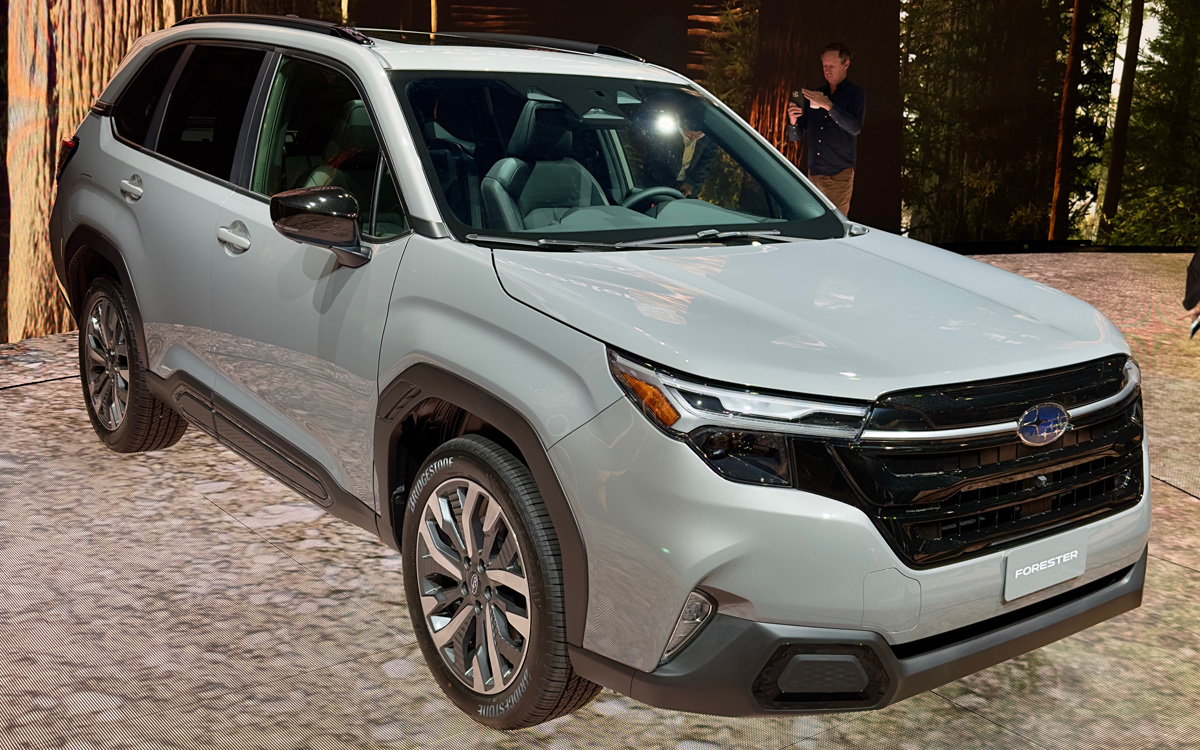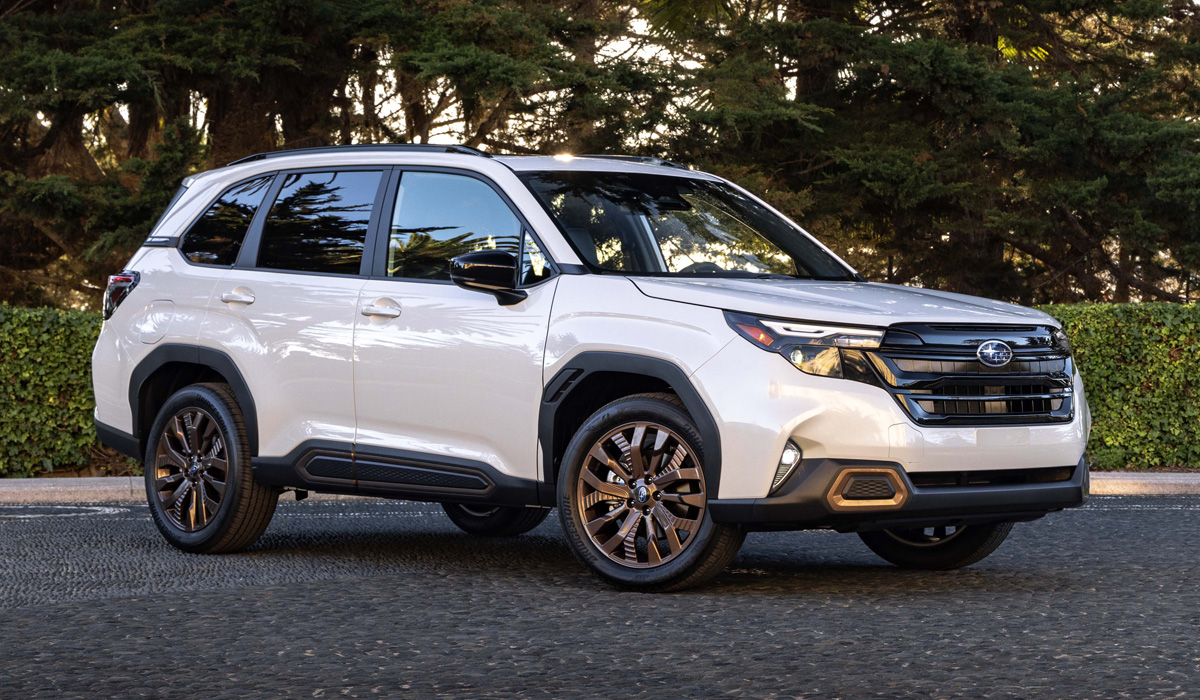
The current “fifth” Forester has been in service for less than six years and is already ready to give way to a new model: the sixth-generation crossover debuted today at the Los Angeles Auto Show. However, there was no revolution, and even the evolution turned out to be quite moderate. The Forester has remained extremely traditional, because that’s exactly how buyers love it in the main US market: more than 2.6 million of these crossovers of all generations have been sold there all the time.

The modified design is almost the main new thing. The Forester has become more massive, has acquired a large radiator grille and angular wheel arches, and the grilles in the front wings are functional: air is discharged from the front wheel arches through them. The dimensions have not changed much: compared to its predecessor, the length has increased by 15 mm (up to 4656 mm), and the width has become 13 mm larger (now 1829 mm). The height has not changed at all (1730 mm, taking into account the roof rails), as well as the ground clearance (221 mm in the American specification).
The upgraded SGP platform (Subaru Global Platform) has reinforced suspension mounts, but the wheelbase has not changed (2670 mm). New welding technologies were used in the production of the body, and the total length of the adhesive joints was more than tripled — from 8 to 27 meters. All these measures made it possible to increase the torsional rigidity of the body by 10%, as well as reduce vibrations in the cabin. The steering mechanism with an electric booster mounted on the rail has been recalibrated.
The cabin retains analog devices (there are no virtual ones even among the options), an abundance of physical buttons and a classic transmission selector. So the only serious new thing is the portrait screen of the Starlink media system with a diagonal of 11.6 inches, although it is already familiar from other Subaru models. Such a display relies only on expensive versions, and “in the base” there are two separate seven—inch touchscreens (the lower one is responsible only for climate control). There is a wireless connection of the Apple CarPlay and Android Auto interfaces, as well as optional ventilation of the front seats.
Interestingly, the Forester’s salon has become smaller! In the States, it is customary to indicate the volume of the passenger compartment, and in the Subaru crossover it has decreased from 3.16 cubic meters in the previous model to 3.14 cubic meters. But the trunk volume has been increased from 818 to 838 liters (according to the EPA method), and with the rear row folded — from 2101 to 2107 liters. The electric drive of the fifth door for the first time had an activation function with a wave of the foot under the bumper.

Following other Subaru models, the new Forester has acquired an improved EyeSight system, which, in addition to the existing two lenses under the windshield, has a third one installed in the center. The company claims that this monocam recognizes cyclists and pedestrians faster. Also, Forester has acquired an electric brake booster, which allows electronics to start slowing down faster and more intensively. And if the driver suddenly lost consciousness and does not respond to warnings, the system will turn on the emergency, smoothly stop the car and open the door locks. Finally, a full-fledged all-round view system appeared.

In terms of technology, nothing new. Overseas, Forester will still have neither a turbo engine nor a hybrid powerplant, although all this has been on the Japanese market for a long time. The specification for America includes an oppositional atmospheric 2.5, a Lineartronic wedge-chain variator and a basic all-wheel drive. The engine power has become slightly lower (183 instead of 185 hp), although the torque has increased (241 instead of 239 Nm). The X-Mode system can have one or two off-road driving electronics modes (depending on the configuration).

In America, sales of a new generation of Foresters will begin in the spring of 2024. By that time, Subaru will show versions for other markets. Now the outgoing model costs from 27 thousand to 37 thousand dollars in the USA.